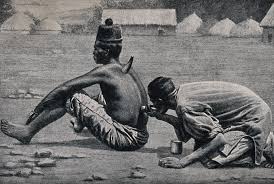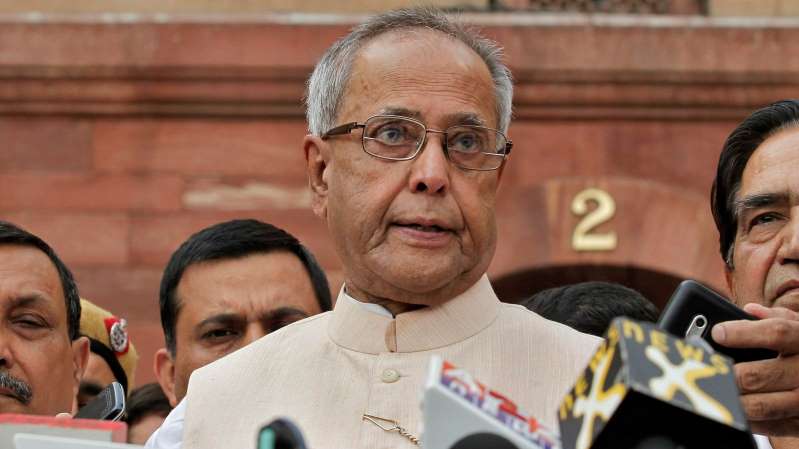Man has a live worm that 'stayed in his brain for 17 years' removed










Man has a live worm that 'stayed in his brain for 17 years' removed
A live five-inch worm has been taken out of a Chinese man’s brain after the parasite remained inside his body for 17 years, according to reports.A live five-inch worm has been taken out of a Chinese man’s brain after the parasite remained inside his body for 17 years, according to reports.
The 23-year-old said he started suffering numbness in his hands and feet since the age of six. He finally went to a hospital after losing sensation in the right half of his upper body. Doctors suggested the patient’s infection was a result of consuming raw or half-cooked exotic meat, such as frogs or snakes.The incident was brought to light after surgeons successfully removed the tapeworm from the man’s brain on Tuesday at the First Affiliated Hospital of Wuchang University in the eastern Chinese province Jiangsu.
The patient, known by his surname Chen, told doctors that he started experiencing numbness in his hands and feet 17 years ago. He also had headaches and nauseas occasionally.As his parents always had difficulty moving their limbs, Mr Chen ignored the symptoms and never went to a hospital, believing they were genetic problems, a medic told Jiangsu Television.

The Chinese man eventually sought medical attention in 2015 after he lost sensation in the right half of his upper body.‘Half of my upper body was completely numb,’ Mr Chen said to Pear Video. ‘I couldn’t feel my hand and couldn’t lift it.’After conducting a CT scan, doctors found the twisted parasite inside the patient’s brain. Mr Chen was diagnosed with sparganosis mansoni, a rare parasitic disease. Although medics are still determining the exact cause of Mr Chen’s condition, they say his infection is mainly a result of drinking contaminated water or consuming undercooked wild animal meat, such as frogs or snakes.
‘Once the worm enters the human’s body, it would cause severe infection,’ a medic told reporters. ‘The parasite would ‘eat’ the brain and damage its function, which causes numbness in hands and feet or affect one’s intellectual.’
When Mr Chen was first diagnosed at the age of 18, the surgeons had decided to delay the removal surgery because the location of the parasite was not suitable for operation. He had been receiving conservative management until recently when he was scheduled to undergo the procedure on August 25.
The man is slowly recovering after doctors successfully removed the live worm which measured about 12 centimetres (five inches).It is estimated to have stayed in Mr Chen's brain for 17 years as the man first developed symptoms aged six, said Chinese media.
In April, a 23-year-old Chinese woman also had a live six-inch worm removed from her brain after doctors linked the parasite to the eating of raw wild animal meat.The patient, known by her alias Xiao Yi, went to a local clinic in Jiangsu province of eastern China in January after having continuous headaches.
The doctors performed brain surgery on the woman after she tested positive for being infected with parasites.
Reference: Daily Mail: Emilia Jiang For Mailonline 3 days ago:28/08/2020
Single blood test can diagnose gluten illness










Single blood test can diagnose gluten illness
Thousands of Britons suspected of suffering with agonising coeliac disease can now be diagnosed with a simple blood test, sparing them from an unpleasant internal examination.Thousands of Britons suspected of suffering with agonising coeliac disease can now be diagnosed with a simple blood test, sparing them from an unpleasant internal examination.
The autoimmune disease, which causes the body to attack healthy tissue in response to gluten in wheat, barley and rye, can cause permanent organ damage and bowel cancer if it is not diagnosed early and the patient's move to a strict gluten-free diet is delayed.
Previously, in order to diagnose coeliac disease, which affects roughly one in 100 people in the UK, patients had to have a blood test followed about six weeks later by an internal examination called an endoscopy, in which a camera is threaded down their throat and into the small intestine.
Thousands of Britons suspected of suffering with agonising coeliac disease can now be diagnosed with a simple blood test, sparing them from an unpleasant internal examination. The autoimmune disease, which causes the body to attack healthy tissue in response to gluten in wheat, barley and rye, can cause permanent organ damage and bowel cancer if it is not diagnosed early and the patient's move to a strict gluten-free diet is delayed.
Previously, in order to diagnose coeliac disease, which affects roughly one in 100 people in the UK, patients had to have a blood test followed about six weeks later by an internal examination called an endoscopy, in which a camera is threaded down their throat and into the small intestine.
a hand holding a blue and white shirt: Thousands suspected of suffering with agonising coeliac disease can now be diagnosed with a simple blood test, sparing them from an unpleasant internal examination (stock)© Provided by Daily Mail Thousands suspected of suffering with agonising coeliac disease can now be diagnosed with a simple blood test, sparing them from an unpleasant internal examination (stock)While waiting for the endoscopy, patients continue with their normal, gluten-filled diet to ensure that tell-tale signs of the painful condition – inflammation of the gut – show up during the examination.
Images are taken of the lining of the gut and a small amount of tissue is also removed to check for internal damage, which can irritate the back of the throat. But new evidence shows that in 40 per cent of coeliac patients, the dreaded internal examination is not necessary.
A report by British researchers, soon to be published in leading gastroenterology journal Gut, shows that the blood test alone is 95 per cent accurate for diagnosing the condition.This builds on evidence from 2014, when a US study involving more than 900 patients found that roughly a third of endoscopy procedures were 'unnecessary'.
This data, coupled with the need to catch up with a backlog of endoscopies created during the Covid-19 pandemic, has provoked a change in guidance from the British Society of Gastroenterology and The National Institute for Health and Care Excellence (NICE).

It's a change that will be transformative for the estimated 500,000 Britons who suffer with undiagnosed coeliac disease.'We have a huge backlog of patients waiting for endoscopies, referred during lockdown when they were on hold,' says Professor David Sanders, consultant gastroenterologist at Royal Hallamshire Hospital in Sheffield and the author of the new guidelines.
Officially, Prof Sanders says, the change is temporary, although he plans to review it at the end of the year and is confident it will remain in place for the foreseeable future.'People often face a painful delay of several weeks for referrals and an endoscopy, in which time it's vital they don't change their diet and keep eating gluten so we can see if it causes inflammation in their small intestine,' he says.
'Diagnosing via a blood test means they can adopt a gluten-free diet straight away, reducing the risk of long-term damage.' a woman wearing glasses and smiling at the camera: One patient to benefit from the new, fast-track approach is 26-year-old Tania Mohamed (pictured), a junior doctor from Essex© The blood test measures levels of proteins called anti-transglutaminase antibodies, or TTG2, that are at higher levels in the blood of people with Coeliac. These proteins tell the immune system to 'attack' the body's tissues unnecessarily, causing inflammation.
Coeliac sufferers can have hundreds times more tTG proteins than healthy people. According to Prof Sanders, roughly 40 per cent of those with the condition will have at least ten times the normal amount. In these patients, studies show the blood test to be 95 per cent sensitive – which means it is highly accurate at detecting people with the condition – and 95 per cent specific, meaning it's unlikely to tell someone they have coeliac disease when in fact they do not. Those with antibody levels lower than ten times the normal range will still require an endoscopy before the diagnosis can be confirmed.
Dr Ajay Verma, consultant gastroenterologist at Kettering General Hospital, says: 'Historically, we've wanted to confirm the diagnosis by taking a biopsy of the lining of the small intestine before giving a full diagnosis in all patients – no matter how high their antibody response was.
'We didn't want to tell someone to follow a strict gluten-free diet until the day they die unless we were absolutely sure. 'But more and more evidence confirms that a blood test alone is enough. We were heading this way, but Covid-19 has accelerated the evolution.'Sleeping on our side helps us to breathe more easily throughout the night, says Dr Irshaad Ebrahim of the London Sleep Centre.
'In this position, the pressure on our heart and lungs is reduced, opening the airways,' he adds. 'Sleep apnoea, where airways get too narrow during sleep, disrupting breathing, tends to be worse when people flip on to their back.'But if you're one of the few people who sleep on their back and wake up feeling rested every morning, then there's no need to change. Good sleep is about what's comfortable for you.'
Gastroenterologists at many NHS trusts are still operating at reduced capacity as a result of Covid-19. For example, doctors at Hampshire Hospitals NHS Foundation Trust used to perform up to 18 diagnostic endoscopies a day, but now social-distancing and cleaning restrictions mean they struggle to do ten.
It is hoped the new guidelines will spare patients from lengthy delays, and free-up services for priority patients, such as those with suspected cancers. One patient to benefit from the new, fast-track approach is 26-year-old Tania Mohamed, a junior doctor from Essex.
In 2018, following two years of chronic exhaustion, deficiencies in calcium and Vitamin B – as well as iron levels 'low enough to require a transfusion' – Dr Mohamed sought advice from a gastroenterologist colleague.'I was working in A&E, so luckily I had access to an expert who recognised my symptoms and told me to get the coeliac disease blood test from my GP,' she says.
'I was shocked to see I had extremely high levels of antibodies. I was referred to the gastroenterologist I knew at the hospital.' At the time, a follow-up endoscopy was standard procedure.
'But he was ahead of the game and said it was only a matter of time before the diagnostic process was updated, so he quickly diagnosed coeliac disease,' she says. 'As soon as I went on a gluten-free diet, I had bags more energy. My blood iron levels doubled and I stopped being that girl who only ever wanted to sleep.'
Prof Sanders urges caution about the new approach. He says: 'We're watching carefully for potential consequences, as it relies heavily on GPs interpreting the rules correctly. All patients must still be referred to a gastroenterologist for a formal diagnosis.' For peace of mind, Dr Mohamed eventually opted to have an endoscopy last year – hoping that her bowel remained unscathed. 'I had serious inflammation in my gut lining – it just confirmed what I already knew,' she says. 'But it motivated me to stick to the diet.
'The endoscopy shouldn't be mandatory – it's not pleasant or comfortable, and there's risks involved. 'Now, with all the evidence we have for the blood test, it's time for the procedure to take a back seat.'Now thousands of people with suspected coeliac disease will be offered a hassle-free diagnosis.
Reference: Daily Mail: Eve Simmons For The Mail On Sunday 2 days ago: 31/08/2020
Meet the woman who gave the world antiviral drugs








Meet the woman who gave the world antiviral drugs
When news broke in April that the drug remdesivir had been shown to speed recovery in patients hospitalized with COVID-19, Anthony Fauci, director of the U.S. National Institute of Allergy and Infectious Diseases, hailed the finding as “an important proof of concept” in the race to bring the pandemic to heel.When news broke in April that the drug remdesivir had been shown to speed recovery in patients hospitalized with COVID-19, Anthony Fauci, director of the U.S. National Institute of Allergy and Infectious Diseases, hailed the finding as “an important proof of concept” in the race to bring the pandemic to heel.
Unlike a vaccine, which prompts the body to mount a defense against invading viruses, remdesivir is an antiviral drug, which hampers the ability of a virus to replicate and spread. For now, results related to remdesivir are mixed, although some studies continue to suggest the drug can improve outcomes for patients with severe forms of COVID-19. Still, only a few decades ago, most scientists doubted such a thing was even possible—that a tiny, parasitic particle wholly reliant on a host cell to reproduce could be inhibited without harm to the cell itself.
Now, antivirals are used to treat herpes, hepatitis, HIV, Ebola, and more. And arguably, none would exist today were it not for Gertrude “Trudy” Elion. Born in 1918 in Manhattan, Elion overcame early financial hardship and outright sexism to win the 1988 Nobel Prize in Physiology or Medicine, becoming only the fifth woman to do so. She shared the award with her longtime collaborator George Hitchings, who hired her in 1944 to join his biochemistry lab at the pharmaceutical company Burroughs Wellcome (now part of GlaxoSmithKline).
It was only after Hitchings’ retirement from active research in 1967 that Elion embarked on what she would later describe as her “antiviral odyssey.” By then, Elion “had had enough already of being junior” and seized the opportunity, at last, “to show what I could do on my own,” she told writer Sharon Bertsch McGrayne, author of the 2001 book Nobel Prize Women in Science.
Rational approach
Elion was just 19 years old when she graduated summa cum laude from Hunter College in 1937 with a bachelor’s degree in chemistry. Her parents, immigrants from Eastern Europe, were bankrupted by the Great Depression. They couldn’t pay for their daughter’s graduate education, and none of the programs to which she’d applied would offer her financial aid.
Worse, it seemed no matter how well she’d done in school, research laboratories wouldn’t hire a woman. As she recalled years later, on more than one occasion she was told that, though she was qualified for the position, she would be “a distracting influence” on the laboratory staff.
Nevertheless, Elion persisted, taking temporary jobs and living at home to save up money. She worked as a food analyst for a grocery chain, answered phones at a doctor’s office, and taught chemistry in New York City high schools while pursuing her master’s degree at New York University on nights and weekends.

Finally, thanks to labor shortages created by World War II, real opportunities started coming her way, first with Johnson & Johnson and then with Burroughs Wellcome.
Up until the 1970s, most new drugs were found by trial-and-error or stumbled upon serendipitously. Take Alexander Fleming’s accidental discovery of penicillin, which revolutionized the treatment of bacterial infections. Or the chance observation by a French army surgeon, Henri Laborit, that an anesthetic called chlorpromazine had a calming effect on patients with schizophrenia, the first in of a series of breakthroughs in psychiatric medication.
Hitchings proposed another way forward—a rational, scientific approach to drug discovery based on knowledge of a biological target. He hypothesized that scientists could inhibit pathogen cells from replicating by making defective copies of their genetic building blocks. Once these copies were integrated into the germ’s metabolic pathways, they would jam up the cellular machinery, interfering with the reactions necessary for DNA synthesis.
Shortly after hiring Elion, Hitchings assigned her to work on purines. These ring-like nitrogen molecules were known to be a type of nucleoside, the broad term for the structural bases of DNA. Elion didn’t know what purines were, but after months of poring over the literature, she began making compounds “that had never been described before” and “felt the excitement of the inventor who creates a 'new composition of matter.'”
“Trudy was making nucleosides before we even knew what the structure of DNA was,” says Marty St. Clair, a virologist who came to work for Elion in 1976. “That’s how well she understood the chemistry.” Together, Elion and Hitchings pioneered the use of rational drug design, and they were phenomenally successfully. Over a 20-year period, the pair invented new medicines for a long list of serious conditions: leukemia, malaria, gout, rheumatoid arthritis, organ rejection, bacterial infection, and more.
Their first drug, 6-mercaptopurine (6-MP), came about in 1951 through a collaboration with researchers at Memorial Sloan-Kettering Cancer Center in New York. Still a mainstay in combination therapy for children with acute lymphoblastic leukemia (ALL), 6-MP made possible one of the great success stories in cancer treatment, helping to increase the cure rate of ALL in children from 10 percent in the 1950s to more than 80 percent today.
Several years later, Elion and Hitchings developed the anti-malarial agent pyrimethamine, which is now used primarily to treat a potentially fatal foodborne illness called toxoplasmosis. (Better known by its brand name Daraprim, the drug made headlines with its 2015 purchase and price hike by the disgraced former pharmaceutical executive Martin Shkreli.) And with the development of trimethoprim—still commonly prescribed as part of the combination treatment for urinary tract infections—they added to the growing arsenal of medicines made during what became known as the golden age of antibiotic discovery. By contrast, the quest for drugs to treat viruses lagged far behind.
The final jewel
The first approved antivirals didn’t arrive on the market until the early 1960s, and all fell far short of expectations. As one history of antivirals observed, the early versions of these drugs were “somewhere between cancer chemotherapeutic principles and folk medicine.” Highly toxic and minimally effective, they merely confirmed what most scientists had long assumed: Because virus and cell are so inextricably intertwined, viral diseases simply couldn’t be treated.
At one time, Elion might well have agreed. Back in 1948, she had noticed that a compound she’d synthesized for the treatment of cancer—2,6-diaminopurine—had shown impressive antiviral activity. She was intrigued but became discouraged by the drug’s toxicity, and ultimately shelved it to focus on other work.
In 1968, shortly after Hitchings had left the lab to become vice president of research, Elion came across a report that something similar to 2,6-diaminopurine had recently shown antiviral activity. The news “rang a bell,” she later said, prompting her and her team of “diligent and devoted scientists” to pick up where she’d left off two decades prior.
Over the next four years, they secretly studied a remarkable new compound they called acyclovir, working to unravel the mysteries of its activity and metabolism without alerting the competition to what they’d found. Presented in 1978 at a conference in Atlanta, Georgia, acyclovir was unlike anything the world had ever seen. A potent inhibitor of herpes viruses with remarkably low toxicity, it shattered the conventional wisdom. Much like penicillin half a century before, it heralded the advent of a new therapeutic era.
“Acyclovir was the drug that changed everything in the effort to develop effective antivirals,” says Keith Jerome, director of the molecular virology laboratory at the University of Washington medical school. “It proved it was possible to develop highly specific drugs that targeted viruses without causing unwanted side effects.”
Elion called acyclovir her “final jewel,” and indeed, it was the last drug she would develop during her official tenure at Burroughs Wellcome. She retired in 1983, but those working in her lab almost didn’t realize. “She still came in every day,” recalls St. Clair, who was instrumental in discerning acyclovir’s mechanism of action.
In 1991, Elion was awarded the prestigious National Medal of Science by then-President George Bush, who said she exemplified how one person’s work can help “banish suffering and prolong life for many millions of people.” Elion died in 1999 at age 81.
St. Clair said she and colleagues “used many of the same procedures that we did for acyclovir to look for a drug for HIV.” They soon found it in another nucleoside analogue selected from a handful of the company’s most promising compounds. “That wouldn’t have happened without Trudy,” St. Clair says.
“We did what she trained us to do, and we ended up with AZT,” or azidothymidine, the first drug approved for the treatment of HIV. Though only moderately effective, AZT paved the way for later generations of life-saving antiretroviral therapy. The NIAID’s Fauci has said he believes remdesivir can do the same, opening the door to the discovery and development of new, more effective drugs for COVID-19.
“Trudy showed us we could do this,” St. Clair says. “That things that people thought were impossible are not impossible.”
Reference: National Geographic: Patrick Adams 11 hrs ago: 31/08/2020
Former Indian president Pranab Mukherjee dies at 84 after coronavirus diagnosis











Former Indian president Pranab Mukherjee dies at 84 after coronavirus diagnosis
Former Indian president Pranab Mukherjee has died at the age of 84.Former Indian president Pranab Mukherjee has died at the age of 84.Mr Mukherjee had emergency surgery for a blood clot in his brain on 10 August and had also tested positive for coronavirus after the procedure.
He was the 13th president of India from 2012 to 2017 and had a political career spanning five decades.
The Army Hospital Research and Referral in New Delhi, where he was treated, said he had remained in a coma since the surgery and later suffered septic shock after developing a lung infection.His son, Abhijeet Mukherjee, announced the news of his death on Monday evening local time.
India's prime minister Narendra Modi was among the first to pay tribute and said he would "always cherish" their interactions.

"He made the president's house a centre of learning, innovation, culture, science and literature. His wise counsel on key policy matters will never be forgotten by me," he said.
"I was new to Delhi in 2014. From day one, I was blessed to have the guidance, support and blessings of Shri Pranab Mukherjee."
Mr Mukherjee's successor, Ram Nath Kovind, said his death marked the "passing of an era".
He made his debut in politics in 1969 and was recruited into the Congress party by then-prime minister Indira Gandhi.
Four years later, he became a member of the Cabinet and was known as one of Ms Gandhi's most trusted ministers.
Mr Mukherjee showed much political promise and was promoted to finance minister at the age of 47 - the youngest person to hold the post.
Over his career, he was finance, defence and foreign minister for three separate prime ministers.
Among his achievements was his pivotal role in helping the India-US nuclear agreement to pass.
He had dreams of becoming prime minister but, much to his frustration, he was overlooked by the Congress party after Ms Gandhi's assassination.
Instead, the role went to her son Rajiv Gandhi.
By the time he became India's president in 2012, he was hugely qualified for the role and had a wealth of experience.
He served as president until 2017 and stepped away from politics the same year citing health concerns.
Reference: Sky News: 6 hrs ago;31/08/2020
Articles - Most Read
- Home
- LIVER DIS-EASE AND GALL BLADDER DIS-EASE
- Contacts
- African Wholistics - Medicines, Machines and Ignorance
- African Wholistics -The Overlooked Revolution
- African Holistics - Seduced by Ignorance and Research
- The Children of the Sun-3
- Kidney Stones-African Holistic Health
- The Serpent and the RainBow-The Jaguar - 2
- PART ONE: DIS-EASE TREATMENT AND HEALTH-3
- 'Tortured' and shackled pupils freed from Nigerian Islamic school
- King Leopold's Ghost - Introduction
- PART ONE: DIS-EASE TREATMENT AND HEALTH-4
- PART ONE: DIS-EASE TREATMENT AND HEALTH-2
- PART ONE: DIS-EASE TREATMENT AND HEALTH-5
- African Wholistics - Medicine
- Menopause
- The Black Pharaohs Nubian Pharaohs of Ancient Egypt
- The Mystery System
- PART ONE: DIS-EASE TREATMENT AND HEALTH-6
Who's On Line?
We have 173 guests and no members online
Ad Agency Remote
Articles - Latest
- The Male G Spot Is Real—and It's the Secret to an Unbelievable Orgasm
- Herbs for Parasitic Infections
- Vaginal Care - From Pubes to Lubes: 8 Ways to Keep Your Vagina Happy
- 5 Negative Side Effects Of Anal Sex
- Your Herbs and Spices Might Contain Arsenic, Cadmium, and Lead
- Struggling COVID-19 Vaccines From AstraZeneca, BioNTech/Pfizer, Moderna Cut Incidence Of Arterial Thromboses That Cause Heart Attacks, Strokes, British Study Shows
- Cartilage comfort - Natural Solutions
- Stop Overthinking Now: 18 Ways to Control Your Mind Again
- Groundbreaking method profiles gene activity in the living brain
- Top 5 health benefits of quinoa
- Chromolaena odorata - Jackanna Bush
- Quickly Drain You Lymph System Using Theses Simple Techniques to Boost Immunity and Remove Toxins
- Doctors from Nigeria 'facing exploitation' in UK
- Amaranth, callaloo, bayam, chauli
- 9 Impressive Benefits of Horsetail
- Collagen The Age-Defying Secret Of The Stars + Popular Products in 2025
- Sarcopenia With Aging
- How to Travel as a Senior (20 Simple Tips)
- Everything you need to know about mangosteen
